What if I just go around my neighbourhood gathering as many populations of edible vegetables as I can for land-racing (selection)? Here’s a little story of a possible near future perennial vegetable garden.
He sits at the garden table in late summer, looking out at his vegetable beds.
From around the neighborhood, no more than half an hour’s hike, he’s managed to gather a surprising depth of edible wild vegetables which he’s been growing, selecting and eating for the last decade.
Both the broadleaf and narrowleaf plantain (Plantago major and P. lanceolata) rows are looking healthy.
The broadleaf plantain in particular is showing a lot of variety - he can group them loosely into two groups, the first chosen for bearing the maximum amount of large seed and the second as a leaf crop. The second group is showing some interesting variation; variagation and some red tinges are appearing now. They also seem to go to seed more slowly too. These two patches are far apart to low the crossing between the two, but he’s fine with some genetic exchange.
The narrowleaf plantain is a snail favourite but the damage has been less as he’s been culling the most damaged specimens. The vigour seems to be increasing too - he’s not sure whether he’s selecting for snail-proofness or just the ability to out-grow a snail’s appetite.
For the dock leaf rows, he’s also been focused on culling the most pest damaged plants to great effect. He’s starting to have suspicions that the two or so species he’s gathered (curly and bitter dock, Rumex crispus and R. obtusifolius) have naturally hybridised and that he’s actually tending the children - not a bad place to be!
The row of common knotgrass (Polygonum aviculare) seems to be showing some promise but it’s slow going as they seem to be mostly self-fertile with the very occasional cross. He’s got high hopes that he can pull some decent sized seeds in a few years.
Of course, there are his two large patches of nettles (Urtica dioica). He’s trying hard to select for nettles that go to seed late so he can maximise the tender leaf, and also selecting another population of quick-to-seed nettles for more seed. He’s had to site these two patches far away from each other because they are very cross-purposes. There’s very little chance he can select away the prickles so he’s not bothering.
The common columbine (Aquilegia vulgaris) seems to self sow all around and he’s fine with that. He took extra effort to gather all sorts of different colours - reds, pinks, whites, blues - and it’s lovely to see that genetic expression replaying itself over and over. Plus, the flowers are a delightful garnish.
He’s also growing a patch of spear-leaved orache (Atriplex prostrata) but the low amount of morphological variation means he needs to find some more genetic material on another hike.
The wood aven (Geum urbanum) row is setting seed now and is always getting caught in his dog’s fur. He’s perfected a malt milk substitute using the dehydrated roots and he’s actively selecting for larger roots.
The cleaver (Galium aparine) patch just turned up one day, he’s mostly left this one alone as it produces such abundance of cooking vegetable.
By now, his Common Silverweed (Argentina anserina) is common no more having been hybridised with several other Cinquefoils and then back crossed with the original ancestor. The vigour has shockingly increased, as has the seed bearing ability which has been helpful. The root size has doubled thanks to a lucky cross with Tormentil (Potentilla erecta) but there is now a little fibrous core and a slight bitterness which he’s hopeful can be back-crossed away with a run of the mill Common Silverweed.
He’s constantly on the look out for new populations of each of the plants in his perennial vegetable row. He frequently knocks on neighbour’s houses for permission to prise out a dock or plantain from their driveway. He’s gotten fairly close to some crumbling asbestos to lever up a particularly lush common coloumbine patch, but in his defense, he held his breath!
He’s decided to call this collection his “hyperlocal perennial vegetable garden”, though on the edges of his garden are the hyperlocal trees and bushes…
You might like to know that I’m slowly working towards this future. I’ve started potting up some of the plants mentioned in this little story (for example, the plantains) to see how a little care and fertile soil can do to their productivity.
To be continued.
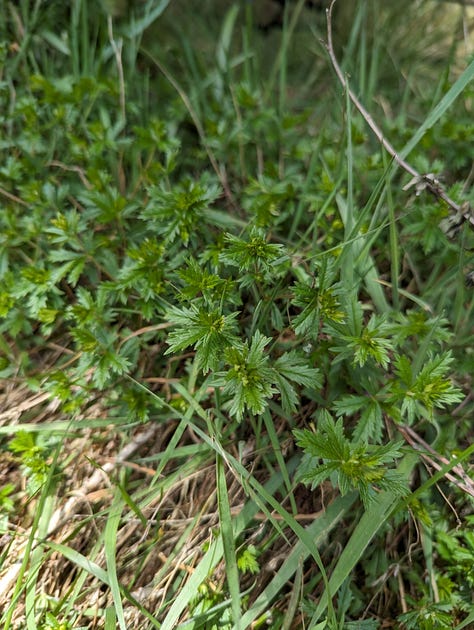
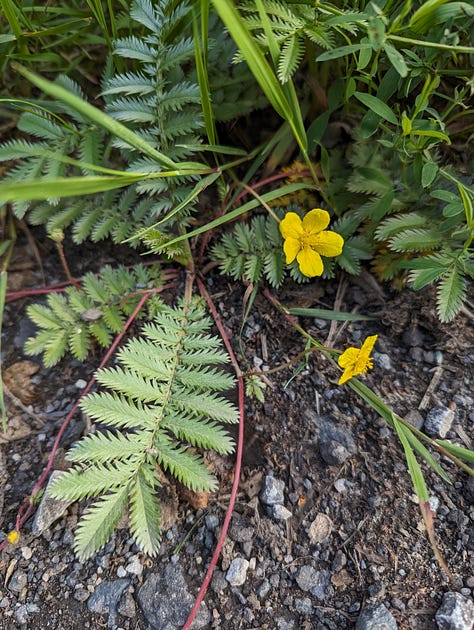
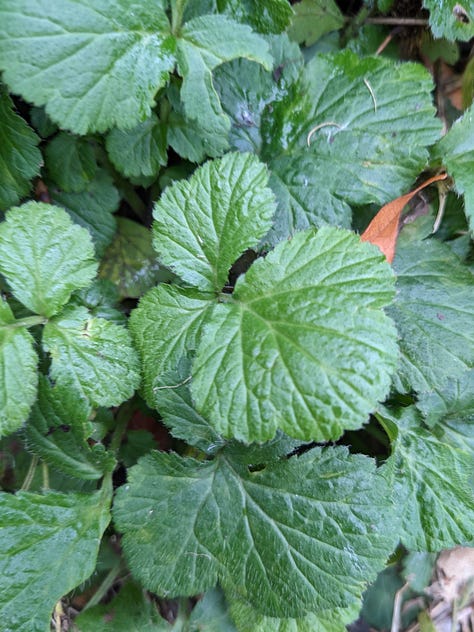

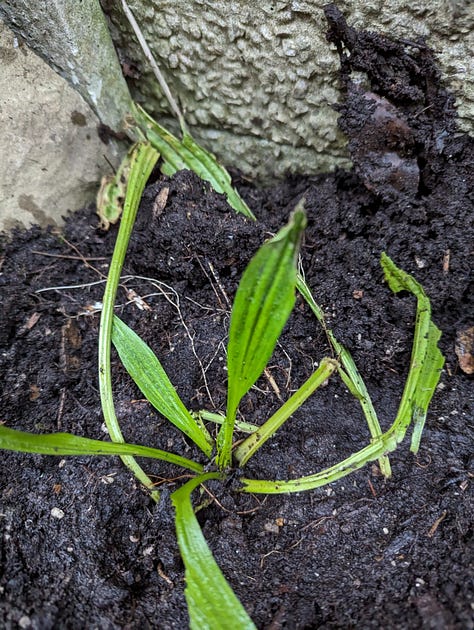


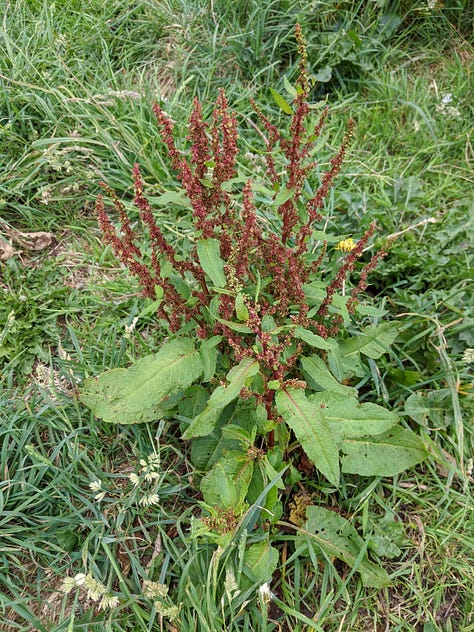
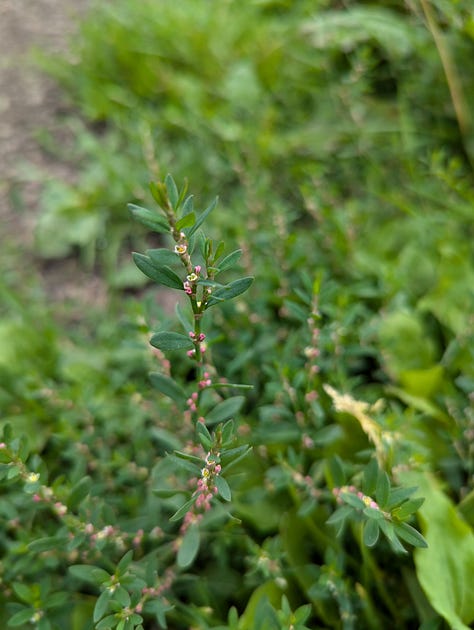

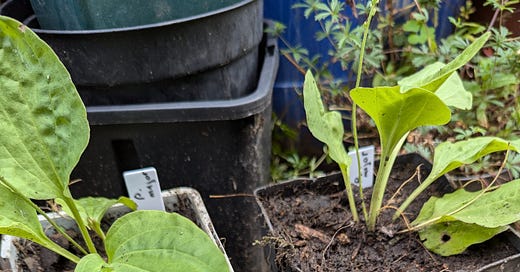


Amazing post. Imagination is humanity's greatest power and we must exercise it regularly.
I only recently learned tha plantain seeds are edible - they do look like they have potential to be useful. Have you tried eating them yet?